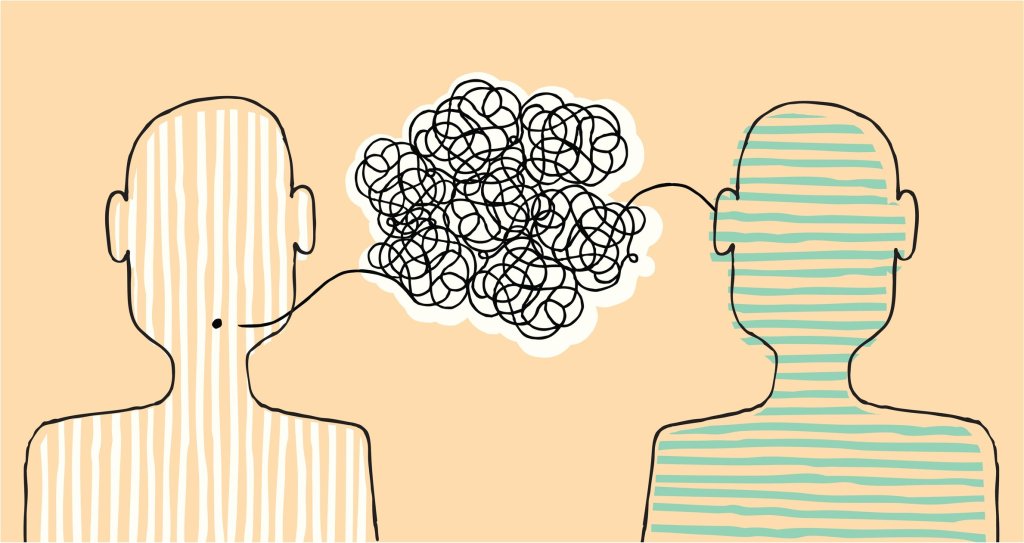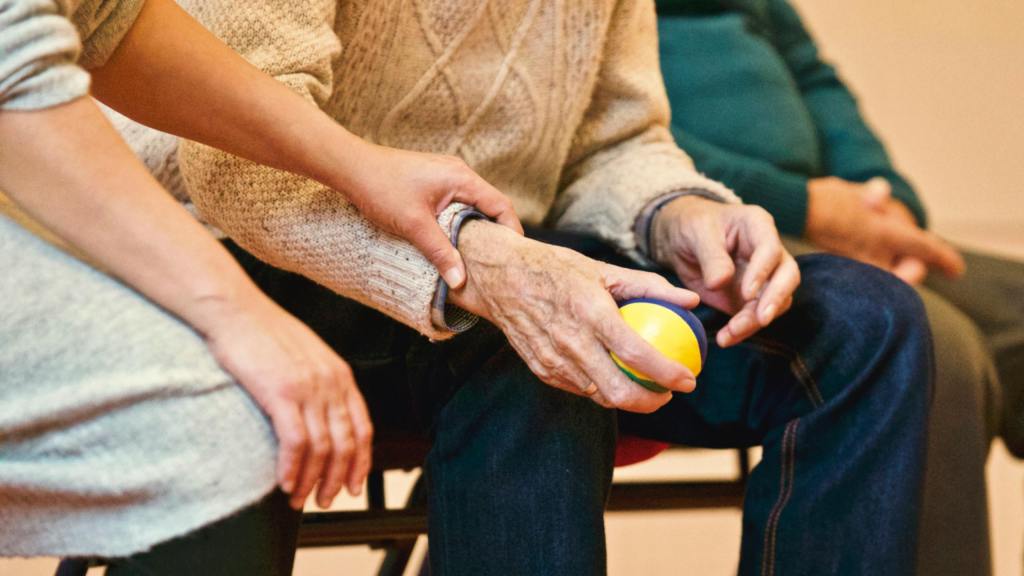
Communicating With Dementia: Avoiding Distress and Irritation
- Connect: In any interaction, especially one that is task oriented like dressing, bathing, or feeding, take a brief moment to connect. Don’t just rush in front of them and get right to the task at hand. A brief 30-seconds to form a connection and allowing them to feel secure will pay big dividends. Greet them warmly by name. Ask how they are doing. Is there anything they need? Then you can suggest what task needs to be completed and have a higher likelihood they will be cooperative.
- Look level: Speak with them at their eye level. Sit, kneel, or squat to allow them not to feel intimidated by a figure towering over them.
- Hold their hand: Convey security and safety by holding their hand, preferably their dominate hand.
- Speak simply: Don’t use lots of words and speak simply.
Approach and non-verbal actions make a big difference. Here are some ways to approach daily activities of living.
- Grooming: Greet them. Again, it’s important to connect with them at their eye level. Bring them to the bathroom or in front of a mirror. Give them grooming supplies and the choice to do things for themselves. You can first guide their hand in a “hand under hand” manner with your hand around theirs and the brush, toothbrush, etc. as you complete the task together. Offer encouragement. Ask what they’d like to do next. Guide them through the movements. Cue them step-by-step and offer assistance when needed. Visual cues are easier to understand.
- Dressing: Greet them, don’t rush in, and, again, get at their level. Hold their hand. Ask if they have any needs. Suggest changing clothes and assist them up. Ask them to choose between one of two items to give a sense of independence. Explain each step of changing. Compliment them. Use few words, so you don’t confuse them.
- Meals: Greet them. Ask to dine with them. Take their hand. Describe what is there. Ask what they would like first. See if they will pick up the utensil. If this is difficult you can hold their hand in yours “hand under hand” and feed them. Tell them when another bite is coming.
- Distress: Go to them and suggest finding a solution to their problem. Take their hand. Ask them for details or to see a photo of the person if they are not there. Ask questions about the concern they are having. Begin to change the topic and redirect them gently. Remember that they are not able to fully express underlying needs. The important thing is to let them know you are there to help.
Additional techniques that can calm and soothe are the following:
- Arm pumping: Grasp their hand firmly and gently pump their arm to calm them down. From here, you can repeat saying the action you would like them to do, and the rhythm of your command will also soothe them.
- Deep exhaling: This is useful when the person with dementia is urgently upset. Get them to breath out in strong exhales to relax their ribcage. Take their hand in between both of your hands. Pump their arm and gently squeeze their hand, noting that their dominant hand will be preferred.
Remember, everyone is different. Be gentle and patient with yourself and find the tips that work best for you and your loved one. Colleen Kavanaugh was a caregiver for a decade to both parents who lived with Breast Cancer, Alzheimer’s and Parkinson’s diseases. She’s now a Certified Dementia Practitioner and Certified Dementia Communications Specialist who advocates for and empowers family caregivers in all areas and stages of care. You can learn more about Colleen at www.thelongestdance.com.
More insights like this:
-

Delirium vs. Dementia: Causes, Symptoms, Treatments, and Preventative Measures
Read more: Delirium vs. Dementia: Causes, Symptoms, Treatments, and Preventative Measures5 Key Things Family Caregivers Need to Know About Delirium and Dementia Onset and Course Are Key Clues That Caregivers Should Watch Closely Delirium develops suddenly (hours or days) and often fluctuates; dementia progresses gradually over months or years. Acute changes in thinking or attention should trigger urgent medical evaluation. Delirium and Dementia…
-

What Caregivers Should Know About Early-Onset Alzheimer’s
Read more: What Caregivers Should Know About Early-Onset Alzheimer’sSymptoms, Stigma, Diagnosis, and Treatment Early-onset Alzheimer’s disease, also known as younger-onset, is the development of Alzheimer’s symptoms between the ages of 30 and 65. A diagnosis is relatively rare at a younger age, and while over 6 million people in the United States are living with Alzheimer’s disease, the true prevalence of early-onset is uncertain.…
-

15 Tips on Transitioning a Loved One to Memory, Dementia, or Alzheimer’s Care
Read more: 15 Tips on Transitioning a Loved One to Memory, Dementia, or Alzheimer’s CareAs a part of your journey caring for someone with Alzheimer’s or another form of dementia, there may come a time when the effects of the disease become too much for a caregiver to handle, and one must seek alternative care options. When deciding the right time to transition your loved one to…